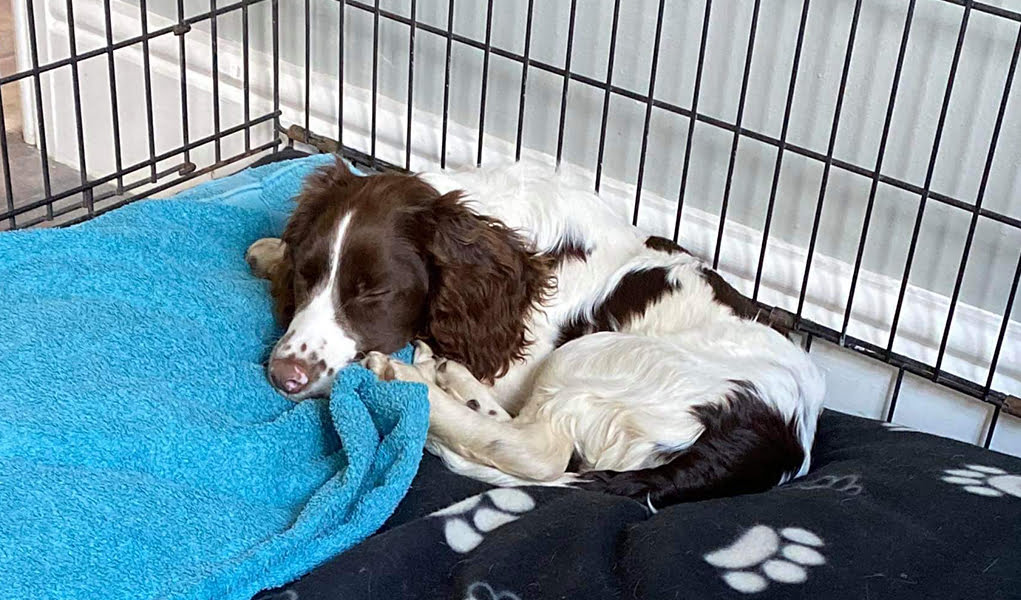Guide to Crate Training
 Photo: Rufus, courtesy of Amy Clark
Photo: Rufus, courtesy of Amy ClarkConfinement or crate training is intended to provide a safe, comfortable haven for your dog whilst restricting it from causing harm or damage to itself or your property. It is rather like providing a toddler with a play pen and should not be seen as a form of punishment. They can also be extremely useful for car travel.
The location and techniques used for training must be designed to ensure that the experience is positive. Although your dog must be encouraged to sleep, rest, and play when in the crate, you cannot expect them to be confined when it is hungry, in need of the toilet or requires exercise.
Benefits of crate/confinement trained dogs:
- Provides security.
- Safety for your pet and your property.
- Aids in the training of acceptable chewing.
- Safety whilst traveling.
Crates come in many different designs but they must be large enough for the dog to move around and stand upright comfortably. Due to the dogs social nature the crate should not be placed in an isolated location. If the crate is being used for ‘time out’ it may be better to consider having two crates so that a negative association does not develop although collapsible types can be re-located easily so they can have a dual purpose.
Crate Training
- Introduce the dog to the crate as early as possible. Place a few treats, toys or food in the crate so that they are motivated to enter it.
- Make the crate as comfortable as possible – it can help to place it where your dog usually sleeps if you are intending to use it in the house.
- Allow the dog to use the crate to sleep in at night but at the early stages of acclimatization do not close the door for long periods.
- Regularly place the dog inside the crate before giving food treats or chews.
- If you find the dog inside the crate praise it heavily.
- Put the dog in the crate after exercise.
- When the dog is willing to enter voluntarily close the door for short periods, gradually increasing the time but initially do not leave it alone.
- Command training can be used – giving a cue for them to enter e.g. ‘go to your crate’. Remember to give the command calmly and without any hint of annoyance in your voice (remember it is not to be used as a punishment).
- Once the dog is regularly going into the crate without showing reluctance you can leave them unattended (but remaining close enough to hear them) for short periods of time gradually extending the time it is alone.
- A mild amount of vocalisation can be expected during the initial confinement period although stop using the crate immediately if the dog shows increased destruction, anxiety or violent attempts to break out.
- Always leave fresh water with the dog when it is confined.
- You can use the settle command in conjunction with using the crate.
- Remember, as with all training, use praise immediately when the dog performs the right behaviour..
- These techniques can be adapted if a crate is just being used for travelling purposes.
- Introduce the crate outside of the car initially, gradually working to using it in the stationary car.
- Progress to very short, uneventful journeys initially, working up to longer ones.
PLEASE NOTE: Crates are not designed to confine your dog for lengthy periods of time.
Recommended Products
I may receive commission when you click Amazon links on this page and make a purchase. However, this does not impact my recommendations, reviews or comparisons.
